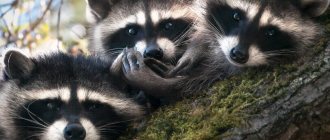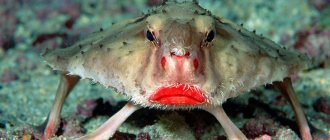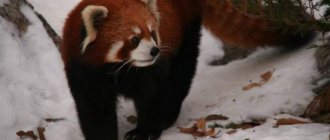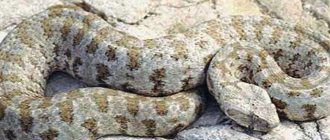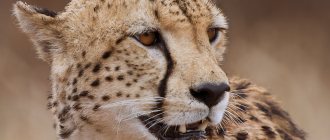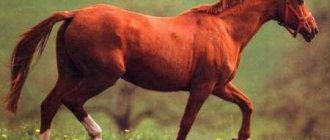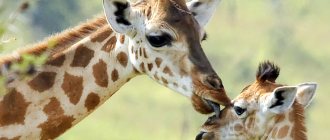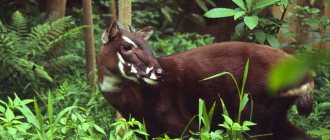Home » Other animals
The tropical ecosystem surpasses others in the number of diverse animals. One of the main reasons for this is the warm climate. It provides sufficient food and water to the inhabitants of these regions.
- 2 Cassowary
- 3 Western gorilla
- 4 Okapi
- 5 Tapir
- 6 Binturong
- 7 Nosukha vulgare
- 8 Flying Dragon
- 9 Kinkajou
- 10 Dart frog
- 11 Jaguar
- 12 Cuban Slittooth
river dolphin
Like other dolphins, it is a cetacean, that is, it is a mammal. Animals grow up to 2.5 meters and 200 kilograms. These are the largest river dolphins in the world.
In addition, they differ in color. The backs of the animals are gray-white, and the undersides are pinkish. The older the dolphin, the lighter its top. Only in captivity the endemic does not become snow-white.
Amazon dolphins live with humans for no more than 3 years. Puberty occurs at 5. So, zoologists did not expect any offspring in captivity and stopped torturing the animals. As you understand, there are no Amazonian endemics in any third-party dolphinarium in the world. In their homeland, by the way, they are called inia, or buto.
River dolphin or inia
Nosukha vulgare
Nosukha are close relatives of raccoons. Their main distinguishing feature is their long nose. They are very familial and live in groups of 10 to 20 individuals each.
The animals are omnivores. But their favorite delicacy is meat. Very sociable. When “talking” with each other they make various sounds. They get along very well with the person. This is why they are domesticated as pets.
Piranha trombetas
Trombetas is one of the tributaries of the Amazon. What animals in the rainforest are terrifying? The list of names will probably include piranhas. There are known cases when they gnawed people.
A lot of books have been written and films have been made on this topic. However, a new species of piranha prefers grass and algae to flesh. On diet food, fish can eat up to 4 kilograms. The Trambetas piranha reaches half a meter in length.
Trambetas piranha
↑ Problems of tropical forests
20 million hectares of tropical forest are destroyed per year. Main reasons for destruction:
- Change gardens after 1-2 years of use.
- Freeing up areas for pastures by burning.
- Forestry.
puma photo
Consequences of forest destruction:
- soil erosion;
- reduction in the diversity of plant and animal species;
- displaced ecological balance of communities and biosphere.
The disappearing rainforest is replaced by secondary forest, or grassland, which gradually becomes desert.
Red-bearded (copper) jumper
It was included in Interesting Rainforest Animals only 3 years ago. A new species of monkey was discovered in the Amazon jungle in 2014 during an expedition organized by the World Wildlife Fund.
In the “lungs of the planet” they found a 441-in new species. There is only one mammal among them - the red-bearded jumper. The monkey is classified as a broad-nosed monkey. Presumably, there are no more than 250 jumpers in the world.
Animals are monogamous; once they form a pair, they do not cheat and live separately with their children. When the jumpers are happy with each other, they purr, which makes them stand out from other monkeys.
In the photo there is a copper jumper monkey
↑ Characteristics of tropical forests
The planet's landmass, tropical and subtropical regions, are 6% occupied by tropical forest with valuable tree species. Wild tropical plants are considered the progenitors of cultivated plants such as coffee, bananas, citrus fruits and others. The “rain” forest receives moisture and heat in abundance throughout the year, there is not enough lighting, but it is constant for each tier.
elephants photos
The duration of daylight is 12 hours, twilight lasts half an hour. The rainforest is divided into tiers: The top is formed by evergreen 70 m trees. The 2nd tier is called the canopy; there are 45-m trees here. 3rd tier – undergrowth. 4th - forest litter. There are only three tiers in the South American forest.
Possibly lost
In Latin, the name of the species is Alabates amissibilis. This is the smallest frog. The species is on the verge of extinction. The difficulty of detecting it is also related to its size. Alabates are frogs the size of your pinky fingernail.
They are beige-brown with stripes on the sides. Despite their tiny size, frogs of the species are poisonous, so they are not suitable for French cuisine, even if it were not for their protected status.
The smallest frog Alabates amissibilis
Jaguar
Distinctive features of the jaguar: 1. Acute vision.
2. Sharp fangs. 3. Long mustache. 4. Strong paws. 5. Long tail. 6. Spotted wool This animal is deservedly considered the king of South American forests. The Jaguar has a strong, muscular build. His back is slightly arched, his chest is wide, his head is large, his paws are strong and strong. The skin of a jaguar is very beautiful: small black spots are scattered across a golden-brown background with white spots. This coloring allows jaguars to reliably camouflage themselves in forests and become practically invisible to their victims.
Jaguar's little sister
The puma is the second largest feline in South America. The only thing bigger than her is the jaguar. This formidable predator lives both on plains and in mountainous areas. Huge fangs allow the wild cat to easily deal with any animal. She prefers to hunt at dusk and waits for her prey, sitting in the trees or on a rock. The cougar does not like to run, but it jumps well. She can easily jump up to 3 meters or jump from the height of a six-story building.
Herbivorous dracula bat
Looks scary, but he's a vegetarian. Dracula is a bat. On its muzzle there is a skin outgrowth called the nasal leaf. Combined with wide-set, slanted eyes, the growth creates an intimidating appearance.
We add large and pointed ears, compressed lips, bluish coloring, and bonyness. It turns out to be an image from nightmares. Actually, herbivorous devils are active at night. During the day, animals hide in the crowns of trees or caves.
Herbivorous bat Dracula
Pollination of flowers
For pollination, flowers must attract insects, birds or bats. They attract with their bright color, smell and delicious nectar. To attract their pollinators, even the plants of the upper tier decorate themselves with beautiful flowers. Moreover, during flowering they even shed some of their leaves so that their flowers stand out more noticeably.
To attract insects, orchids secrete nectar, which makes bees drunk. They are forced to crawl on the flower, pollinating it. Other types of orchids simply slam shut, showering the insect with pollen.
Interesting: Interesting facts about the puma - photos and videos
But it’s not enough to pollinate the flowers; you also need to spread the seeds. Seeds are dispersed by animals. To attract them, plants offer them tasty fruits with seeds hidden inside. The animal eats the fruit, and the seed comes out along with excrement, fully capable of germination.
Agouti and nut
Sometimes plants reproduce with the help of only one type of animal. Thus, the American walnut reproduces only with the help of the large rodent agouti. Although agoutis eat all the nuts, they bury some of them in the ground. Our proteins also make such a reserve. Forgotten seeds sprout.
Fire salamander
The species name, for now, is generalized and refers to salamanders. It was their relative who was discovered in the tropics near the Amazon. The scientific name of the species is Cercosaura hophoides. The lizard has a red tail.
The body is dark with thin yellowish veins. Scientists have long suspected the existence of the species. A clutch of eggs of an unknown reptile was found on the lands of Colombia.
However, neither father nor mother could be found. Perhaps the lizard found in 2014 is the parent of the clutch. Zoologists suggest that Cercosaura hophoides is no more than a hundred years old.
Pictured is a fire salamander
↑ Animals of the tropical forests
The fauna formed in isolation from other continents varies. Thus, the habitat of lemurs and chameleons is Madagascar and the Comoros Islands. South America is the habitat of armadillos, noses, common boa constrictors and anteaters. Central Africa - meeting with the Western gorilla. The jaguar's habitat is Central America.
red panda photo
Similar living conditions created the same type of fauna; there are many archaic, ancient animals. All large mammals live in the tropics (except for the northern inhabitants):
- elephant and rhinoceros;
- hippopotamus and buffalo;
- lion and tiger;
- puma, panther, jaguar;
Many small animals never had to go down, some have adapted to other food. There are many butterflies of marvelous beauty, birds of paradise, tree frogs of various colors. Insects, lizards and toads, chameleons, crocodiles, etc.
Okapi
The okapi population is also on the verge of extinction. This is a rare species of giraffe. It was shown to Western zoologists by pygmies. This happened in 1900. However, this conversation is already about the endemics of the African jungle, in particular the forests of the Congo. Let's go under their canopy.
Externally, this giraffe resembles a horse with an elongated neck. Compared to the neck of an ordinary giraffe, it is, on the contrary, short. But okapi has a record-breaking language. The length of the organ allows it not only to reach succulent foliage, but also to wash the eyes of animals. The okapi also enriched the world of tropical forests
As for the coat color, it is chocolate. Giraffes have transverse white stripes on their legs. In combination with dark brown, they are reminiscent of the colors of zebras.
Okapi are gentle parents. These animals, living in the tropical forest, love children dearly, never take their eyes off them, and protect them to the last drop of blood. Considering the number of okapi, it is impossible to do otherwise. The species is listed in the Red Book and each cub is worth its weight in gold. Several giraffes are not born. One pregnancy - one child.
Amazon Spiders
The structure of a spider
Many people consider spiders to be insects, but they are mistaken. These arthropods belong to a special class - arachnids. All spiders have 8 legs (insects have 6), and their body is divided into 2 sections (insects have 3). The first section of the spider is called the cephalothorax. In it, the head and chest form a single whole. The second section is the abdomen. It contains the digestive organs, as well as the arachnoid glands, with the help of which the spider spins its webs. The greatest diversity of spiders is found in South America. Perhaps nowhere in the world do spiders have such unique forms as in the Amazon.
Tetra Congo
This is a fish of the characin family. There are almost 1700 species. Congo is found only in the basin of the river of the same name. The fish has a bright blue-orange coloring. It is expressed in males. Females are “dressed” more modestly.
The fins of the species resemble the finest lace. The Congo reaches 8.5 centimeters in length and is peaceful. The description is ideal for aquarium fish. The endemic is indeed kept at home. Congos love dark soil. One fish needs about 5 liters of soft water.
Tetra Congo fish
Giant water bug
The body of this insect can reach a length of 15 centimeters! Giant water bugs are quite formidable predators. Their prey includes fish fry, tadpoles, insects, snails and even small fish. Bedbugs wait for their prey in a motionless state, anchored on a stone or aquatic plant. When prey swims very close, they grab it with their front paws.
Bales shrew
It belongs to the shrews and lives in eastern Africa. The range is 500 square kilometers. The animal's burrows are not found throughout their entire length, but only in 5 localities. All of them are destroyed by man.
The animal has a cone-shaped nose, an elongated body, a bare tail, and gray short fur. In general, for most, it’s a mouse and a mouse. The problem of its survival is that without food the animal does not last longer than 11 hours. In conditions of danger and hunger, the latter wins. While the shrew catches the insect, others catch it.
Bales shrew mouse
Geographical location of equatorial forests
Equatorial forests are located on land along the equator. They form a geographical zone shifted south from 8° north latitude to 11° south latitude, and are among the oldest natural zones on the planet.
Evergreen lands are found in the equatorial regions:
- Africa;
- Indonesian Islands;
- Amazonian lowland;
- Northern Peninsulas of Australia;
- Malay Peninsula.
The special geographical location of the forests provides the natural area with a “single season” with hot and rainy weather all year round.
African marabou
Refers to storks. The bird was nicknamed adjutant for its peculiar gait. It is ranked among the largest birds. This refers to flying species. The African marabou grows up to 1.5 meters.
The weight of the animal is about 10 kilograms. A bare head lightens the figure a little. The absence of feathers reveals wrinkled skin with a massive outgrowth on the neck, where the bird, when sitting, puts its equally massive beak.
Appearance, as they say, is not for everyone. It is not for nothing that the animal is made the hero of many phantasmagoric books, where the bird inspires, at a minimum, awe. As an example, let’s take “Nightmares of the Marabou Stork” by Irvine Welsh.
Now, let's move on to the Asian tropics. They are also filled with rare animals. The names of some of them are familiar at first glance. On the island of Sumatra, for example, they are proud of the pig. The fact that it is unusual is indicated by the prefix to the name of the beast.
Pictured is an African marabou
Binturong
This animal has a second name - “cat bear”. Its body structure is similar to that of a cat, but it moves like a clumsy bear.
The body length of the animal is 60-95 cm. The luxurious, fluffy tail accounts for exactly the same amount. With its help, the animal is able to grab various objects.
The binturong's paws are short and each has five toes. The front ones are designed for digging, climbing, and grabbing fruit.
These animals are nocturnal and live in trees.
bearded pig
More like a wild boar than a domestic pig. The latter has a shorter body and more massive legs. The muzzle of the ungulate is covered with long, curly hair. They are hard and match the color of the rest of the body.
Its color is close to beige. The beast knows what animals live in the tropical forest , since it feeds not only on plant foods, but also is predatory. True, bearded men are not capable of sitting in ambush and chasing victims.
Pigs get their protein from worms and grubs dug out of the ground. Animals dig for it in the mangroves, where they live. Bearded pigs are massive. The animals reach 170 centimeters in length. Body weight, at the same time, is about 150 kilograms. Bearded men are a little less than a meter tall.
The bearded pig may also eat worms and grubs
↑ Birds of the tropical forests
Tropical forests are inhabited by birds that are outwardly unusual, with bright plumage. Each continent has its own species. In the Asian tropics there live the partridge-like loon, the bush chicken, the pheasant, and the royal peacock.
toucans photos
The American tropics are home to the running bird Tinamou and parrots. In Latin America - the rainbow toucan. Africa is the homeland of the gray gray parrot, the Golden-helmeted hawk and the Crowned eagle, a fierce bird of prey.
Birds living in dense crowns - rhinoceroses, turacos and toucans - can jump and climb trees, but not fly. The forests of the equator are inhabited by pied pigeons, trogons, woodpeckers, flycatchers, hornbills and other feathered inhabitants.
sun bear
It is the smallest of the bear family. These tropical rainforest animals are also the shortest in the class. But sun bears are no less aggressive.
By the way, they are sunny not because of their positive disposition, but because of the honey color of their muzzle and the same spot on their chest. On a brown background, it is associated with the sunrise.
You can see the sun bear in the trees of the tropics of India, Borneo and Java. Animals rarely descend to the ground. So, the animals really stay closer to the sun, being also the most arboreal in the class.
Sun bears are also the most club-footed. When walking, not only the front feet turn inward, but also the rear feet. The rest of his appearance is also atypical. The bear's head is round with small ears and eyes, but a wide muzzle. The body of the animal, on the contrary, is long.
The sun bear got its name because of the light spots on its chest and face.
Sumatran rhinoceros
Sumatran rhinoceroses are solitary animals. They intersect with each other only during the period of mating and raising cubs. One animal has its own territory.
The Sumatran rhinoceros has two horns. The posterior one is always shorter than the nasal one. There are small folds throughout the animal's body. And unlike its larger relatives, it has fur. It will be difficult to notice her, because the animals are constantly covered in dirt. The color of Sumatran rhinoceroses is red-brown.
These animals go searching for food before dusk and after dawn. They are herbivores.
Tapir
It is included in the description of animals of the rainforest of southeast Asia. In the old days it settled everywhere. Nowadays, the habitat has decreased, as has the number. Tapir in the Red Book.
The animal looks like a cross between a wild boar and an anteater. The elongated nose, reminiscent of a trunk, helps to reach leaves, pick fruits and fish fallen fruits from the forest canopy.
The tapir is an excellent swimmer and also uses its nose when spearfishing. Its main function is also appropriate. The sense of smell helps to find mating partners and recognize danger.
Tapirs are known for their long periods of bearing their young. They give birth approximately 13 months after conception. More than one offspring is not born. At the same time, the lifespan of tapirs is a maximum of 30 years.
It becomes clear why the species is dying out. Despite their protected status, tapirs are desirable prey... for tigers, anacondas, and jaguars. Deforestation is also decimating the population.
Mating season in animals
Animals need to attract a mate and not attract the dangerous attention of predators. To do this, they use signals using sound and light. Painted birds have the ability to reflect the light falling on them. Fireflies have adapted to emit flashing lights. They are located at the end of their abdomen. Fireflies flash and go out at the same time, filling the air with a mysterious light. Some animals emit loud, short screams to attract the attention of the opposite sex. They are afraid that predators will not be able to find them by their voice. And the frogs sing in chorus without fear.
Unfortunately, tropical forests are becoming increasingly scarce. They are destroyed mainly for their valuable wood. Deserts are formed in place of tropical forests. People want to save the rainforests. The movement to protect forests began in Germany, Colombia, and Sweden. After all, the conservation of tropical forests is in the interests of all humanity.
If you find an error, please select a piece of text and press Ctrl+Enter.
Panda
Not a single list of “ names of tropical forest animals ” can do without it. Endemic to China, it lives in bamboo groves and is a symbol of the country. In the West they learned about it only in the 19th century.
Zoologists in Europe argued for a long time whether to classify pandas as raccoons or bears. Genetic tests helped. The animal is recognized as a bear. He leads a secretive lifestyle in three provinces of the PRC. These are Tibet, Sichuan, Gansu.
Pandas have 6 toes on their paws. One of them is just appearance. It is actually a modified carpal bone. The number of teeth grinding plant food is also off the charts.
A person has 7 times less. That is, pandas have more than 200 teeth. They are active about 12 hours a day. Only 1/5 of the leaves eaten are absorbed. Considering that pandas do not hibernate, the tropical forests are saved only by the rapid growth of bamboo, a couple of meters per day, and the small number of bears themselves.
We will end the trip in Australia. Its tropical zone is also affected. The continent is deserted. Tropical forests grow only along the coasts. Their eastern part is included in the UNESCO World Heritage Site. Let's find out what these wonders are for.
The threat to the safety of gils from civilization
The threat to the continued existence of the Giles not only continues to exist, but is also growing in scale. Deforestation of unique forests, according to scientists, will have irreversible consequences for the “climate” health of the planet.
- Reduced oxygen content.
Equatorial forests are responsible for the presence of sufficient oxygen in the air all year round. Cutting down and processing such forests will lead to a significant deterioration in air composition. Today, some of the rain forests have already been destroyed. In their place, humans have laid out coffee plantations. Oil and rubber palms are being destroyed in large quantities.
Only in equatorial forests do trees grow that are highly valued by manufacturers of durable and beautiful furniture. The demand for high-quality raw materials leads to the constant destruction of equatorial rainforests.
Today, there are no restrictions on the industrial felling of valuable tree species. The area of wet forests has halved over the past decades, and their territory continues to decrease by an average of 1.3% per year.
Further destruction of equatorial forests by civilized man will soon lead to oxygen deficiency.
- Increase in average air temperatures.
A steady increase in atmospheric carbon dioxide as a result of deforestation, according to scientists, could contribute to an increase in average global temperatures by 2°C within 45 years.
- Melting ice.
Rising temperatures will increase the likelihood of polar ice melting at both poles of Antarctica, as well as the ice of the Arctic Ocean. Rising water levels threaten to flood low-lying lands around the world.
- Distribution of desert lands.
The evergreen tropical rainforest preserves the soil in which it grows. Moisture and maintaining soil composition prevents the onset of deserts in equatorial lands. The destruction of the vegetation cover of equatorial lands will lead to disruption of the seasonal rainy cycle and shallowing of rivers. Erosion changes in the soil will begin.
The destruction of equatorial forests on an industrial scale is gaining momentum. Every year, more than 10 million hectares of jungle are destroyed on the planet. The area of destroyed forests is equal to four territories of Belgium.
In the Republic of the Congo, the area of remaining forests accounts for only 60% of the total “forest” area. Under such circumstances, the state is forced to control logging and impose restrictions on timber exports. Restoration of deforested forests is under the control of government agencies. Eucalyptus trees are being intensively planted in devastated forests.
Effective forest conservation measures are being taken in the countries of Central Africa:
- Zaire;
- Congo;
- Gabon;
- Cameroon.
Forest areas in these states, in order to prevent the threat of destruction of equatorial forests, are declared national parks.
Equatorial rainforests are a unique creation of nature. Hylea, rich in diversity of flora and fauna, is part of the planet's fragile ecosystem. Human intervention in it must be reasonable, limited and aimed at preserving the forest.
Article design: Mila Friedan
Helmeted cassowary
This is a bird of the ostrich order and does not fly. The name of the species is Indonesian, translated as “horned head”. The skin growth on it resembles the comb of a rooster, but flesh-colored. There is also a semblance of earrings under the beak. They are scarlet, but thinner and more elongated than those of a rooster. The feathers on the neck are indigo, and the main color is blue-black.
Colorful appearance combined with power. There have been recorded cases where cassowaries killed a person with a kick. It is because of cassowaries that a number of Australian parks are closed to the public.
Birds are not aggressive under normal conditions. Protective reflexes make themselves known. The impact force is predictable with a weight of 60 kilos and a height of one and a half meters. The legs are the strongest part of cassowaries, like other ostriches.
Helmeted cassowary
Flora of equatorial forests
Equatorial forests mostly consist of weakly branching trees with a long trunk. Tree bark is thin. Other plants have settled on the trunks, branches and even leaves of many trees. All forest trees are deciduous and belong to the evergreen category.
The most famous and easily recognizable representatives of the plant world are lianas.
- "Bamboo" liana.
The shoots of this type of vine reach 20 m.
- Strophanthus.
Liana is a medicinal plant for heart failure.
- Physostigma.
A poisonous vine containing physostigmine, used in the treatment of glaucoma. Many interesting and noteworthy plants have been discovered in the equatorial forests.
- Ficus "Strangler".
The seeds of the plant fall into a crack in the tree bark and germinate. The ficus, growing, tightly wraps its roots around the trunk and branches of the tree. As a result of such an attack, the tree stops growing and gradually dies.
- Hevea brasiliensis and ficus rubber.
The famous Hevea and rubber ficus are in demand because of their “milky” sap, from which natural rubber is produced.
- Ceiba (“Cotton” tree).
The tree grows up to 70 m high. Soap is made from the oily seeds of the tree. The fruits of the tree produce a fiber similar in composition to cotton. It serves as a filler for upholstered furniture, pillows and toys. The fibrous pulp of the fruit is also used as a heat and sound insulating material.
- "Oil" palm.
Oil is obtained from its fruits. Various types of soap are produced from it. Ointments and creams are also prepared on its basis. In addition to being used in cosmetology, it serves as a raw material for making candles and margarine. The sap of this palm tree is drunk fresh and canned. The juice is suitable for preparing alcoholic beverages.
- Banana palm.
- "A coffee tree.
- Palm "Rattan".
The dense trunk of the palm tree wraps around the trees and looks like a large gymnastics rope.
- Tsedrela "fragrant".
The wood of the plant serves as raw material for the production of cigarette cases.
Wallaby
The second name of the species is tree kangaroo. At first glance it looks more like a bear. Thick, dense fur covers the entire body. The bag is not immediately noticeable. The cub, by the way, can linger indefinitely.
During periods of danger, wallabies are able to delay giving birth. Physiologically, they should pass a maximum of one year after conception. It happens that a child dies before his time. Then, a new embryo comes to replace it, the first to become stillborn, without obliging it to take care of itself.
Scientists pin their hopes on tree kangaroos to save humanity. The stomach of the endemic is capable of processing methane. In the event of global warming, this will come in handy not only for wallabies, but also for people.
They also puzzle over the thermoregulation of tree kangaroos. The species manages to maintain a comfortable body temperature in hot weather. Not a single individual has yet died from overheating, even without shade and plenty of drink.
Tree wallabies are called tree wallabies due to their lifestyle. Observations of animals have shown that most of them die on the same plant where they were born. Hunters found wallabies here.
The hunt for the endemic was announced because of a legend that the beast once attacked a child. This has not been documented, however, the population is in danger.
The animal's protective status helped stop the extermination. To save humanity, a few tens of thousands of individuals are not enough. Therefore, first they will save and multiply them.
Tree kangaroo wallaby
How did frogs adapt?
Spotted dart frog
High air humidity allows toads and frogs to live far from the river. They live well, living in the upper tiers of the forest. The frogs chose tree hollows for the pond. They coat it with resin from the inside and wait for it to fill with rainwater. The frog then lays eggs there. Dart frogs make holes in moist soil for their offspring.
The male remains to guard the clutch. Then it transfers the tadpoles to the resulting pond formed between the leaves of the bromeliad. Some frogs lay their eggs in a foam nest. They make a nest on branches hanging over the river. The hatched tadpoles immediately fall into the river. Other frogs lay their eggs in damp soil. They come out of there as young individuals.
ENVIRONMENTAL BLOG
About half of all forests on our planet are tropical forests (hylaea), growing in Africa, Southeast Asia, South and Central America. Tropical rainforests are located between 25° north latitude and 30° south latitude, where heavy rainfall occurs frequently. The rainforest ecosystem covers less than two percent of the Earth's surface, but is home to 50 to 70 percent of all life on our planet.
The largest tropical forests are found in Brazil (South America), Zaire (Africa) and Indonesia (Southeast Asia). Rainforest is also found in Hawaii, the Pacific Islands and the Caribbean.
Rainforest climate
The climate in the tropical forest is very warm and humid. Every year, between 400 and 1000 cm of precipitation falls here. The tropics are characterized by a uniform annual distribution of precipitation. There is virtually no change in seasons, and the average air temperature is 28 degrees Celsius. All these conditions significantly influenced the formation of the richest ecosystem on our planet.
Soil in the rainforest
The soil of the tropics is poor in minerals and nutrients - there is a lack of potassium, nitrogen and other trace elements. It is usually red and red-yellow in color. Due to frequent precipitation, beneficial substances are absorbed by plant roots or go deep into the soil. That is why the natives of the tropical forests used the slash-and-burn agricultural system: all vegetation was cut down in small areas, it was subsequently burned, and then the soil was cultivated. Ash acts as a nutrient. When the soil begins to turn barren, usually after 3-5 years, the inhabitants of tropical settlements moved to new areas for farming. It is a sustainable farming method that ensures continued regeneration of the forest.
Rainforest Plants
The warm, humid climate of the rainforest provides the ideal environment for a huge abundance of amazing plant life. The tropical forest is divided into several tiers, each characterized by its own flora and fauna. The tallest trees in the tropics receive the most sunlight, as they reach heights of over 50 meters. This includes, for example, the cotton tree.
The second tier is the dome. It is home to half of the rainforest's wildlife - birds, snakes and monkeys. This includes trees below 50 m in height with wide leaves, hiding sunlight from the lower floors. These are philodendron, strychnos poisonous and rattan palms. Lianas usually stretch along them towards the sun.
The third tier is inhabited by shrubs, ferns and other shade-tolerant species.
The last tier, the bottom, is usually dark and damp, since almost no sunlight penetrates here. It consists of rotted foliage, mushrooms and lichens, as well as young growth of plants of higher tiers.
In each of the regions where tropical forests grow, different types of trees are found.
Tropical trees of Central and South America:
- Mahogany (Sweitinia spp.)
- Spanish cedar (Cedrella spp.)
- Rosewood and Cocobolo (Dalbergia retusa)
- Purple tree (Peltogyne purpurea)
- Kingwood
- Cedro Espina (Pochote [Bombacopsis] spinosa)
- Tulipwood
- Gaiakan (Tabebuia chrysantha)
- Tabebuia rosea
- Bocote
- Jatoba (Hymenaea courbaril)
- Guapinol (Prioria copaifera)
Tropical trees of Africa:
- Bubinga
- Ebony
- Zebrano
- Pink tree
Tropical trees of Asia:
- Malaysian maple
- Teak
Carnivorous plants are widespread in the tropical rain forest , feeding on captured insects and small animals. Among them, Nepenthes (Pitcher Plants), sundew, butterwort, and bladderwort should be noted. By the way, the plants of the lower level with their bright flowering attract insects for pollination, since in these layers there is practically no wind.
Valuable crops are grown in places where tropical forests are cleared:
- mango;
- bananas;
- papaya;
- coffee;
- cocoa;
- vanilla;
- sesame;
- sugar cane;
- avocado;
- cardamom;
- cinnamon;
- turmeric;
- nutmeg.
These cultures play an important role in cooking and cosmetology. Some tropical plants serve as raw materials for medicines, in particular anti-cancer drugs.
Tropical Plant Adaptations for Survival
Any flora needs moisture. There is never a shortage of water in the rainforest, but there is often too much of it. Rainforest plants must survive in areas where there is constant rainfall and flooding. The leaves of tropical plants help deflect raindrops, and some species are armed with a drip tip designed to quickly drain precipitation.
Plants in the tropics need light to live. The dense vegetation of the upper layers of the forest allows little sunlight to reach the lower layers. Therefore, tropical forest plants must either adapt to life in constant twilight, or quickly grow upward in order to “see” the sun.
It is worth noting that in the tropics trees grow with thin and smooth bark, which is capable of accumulating moisture. Some plant species have leaves wider at the bottom of the crown than at the top. This helps allow more sunlight to reach the soil.
Plants such as strangler ficus lead a parasitic lifestyle. They sprout immediately on the tops of other types of trees and thus immediately receive the sunlight they need. Most often, the seeds of ficus hemiepiphytes are carried by birds. That is, the plant begins life as an epiphyte: the seeds, falling into the bark of trees, grow there. Strangler figs grow very slowly, but their roots eventually reach the soil.
As for the epiphytes themselves, or air plants that grow in the rainforest, they obtain nutrients from plant debris and bird droppings that land on the roots and do not depend on the poor soil of the forest. In tropical forests there are such aerial plants as orchids, bromeliads, ferns, selenicereus grandiflora and others.
As mentioned, the soil in most tropical forests is very poor and lacks nutrients. To capture nutrients at the top of the soil, most rainforest trees have shallow roots. Others are wide and powerful, as they must support a massive tree.
Rainforest Animals
The animals of the tropical forests amaze the eye with their diversity. It is in this natural area that you can meet the largest number of representatives of the fauna of our planet. Most of them are in the Amazon rainforest. For example, there are 1,800 species of butterflies alone.
In general, the tropical forest is the habitat of most amphibians (lizards, snakes, crocodiles, salamanders), predators (jaguars, tigers, leopards, pumas). All animals of the tropics have bright colors, since spots and stripes are the best camouflage in the dense jungle. The sounds of the rainforest are provided by the polyphony of songbirds. The tropical forests have the world's largest population of parrots, and other interesting birds include the South American harpy, one of the fifty eagle species that is critically endangered. No less colorful birds are peacocks, whose beauty has long been the subject of legends.
The tropics are also home to a larger number of monkeys: arachnids, orangutans, chimpanzees, monkeys, baboons, gibbons, red-bearded jumpers, and gorillas. In addition, there are sloths, lemurs, Malayan and sun bears, rhinoceroses, hippos, tarantulas, ants, piranhas and other animals.
Disappearance of tropical forests
Tropical timber has long been synonymous with exploitation and plunder. The giant trees are the target of entrepreneurs who use them for commercial purposes. How are forests exploited? The most obvious use of rainforest trees is in the furniture industry.
According to the European Commission, around one-fifth of EU timber imports are from illegal sources. Every day, thousands of products from the international wood mafia pass through store shelves. Tropical wood products are often labeled as "luxury wood", "hardwood", "natural wood" and "solid wood". Usually these terms are used to disguise tropical wood from Asia, Africa and Latin America.
The main exporting countries of tropical trees are Cameroon, Brazil, Indonesia and Cambodia. The most popular and expensive types of tropical wood that are sold are mahogany, teak and rosewood.
Inexpensive species of tropical wood include meranti, ramin, and gabun.
Consequences of tropical deforestation
In most tropical forest countries, illegal logging is common and a serious problem. Economic losses reach billions of dollars, and environmental and social damage is incalculable.
The consequences of tropical deforestation are deforestation and profound environmental changes. Tropical forests contain the world's greatest biodiversity . As a result of poaching, millions of species of animals and plants lose their habitat and, as a result, disappear.
According to the International Union for Conservation of Nature (IUCN) Red List, more than 41,000 plant and animal species are threatened, including great apes such as gorillas and orangutans. Scientific estimates of species lost vary widely, ranging from 50 to 500 species per day.
In addition, logging equipment used to remove timber destroys sensitive topsoil and damages the roots and bark of other trees.
Mining for iron ore, bauxite, gold, oil and other minerals also destroys large areas of tropical forests, such as in the Amazon.
The Meaning of Rainforests
Tropical rainforests play an important role in the ecosystem of our planet. Deforestation of this particular natural zone leads to the formation of a greenhouse effect and, subsequently, to global warming. The largest tropical forest in the world, the Amazon, plays the most important role in this process. 20 percent of global greenhouse gas emissions are attributed to deforestation. The Amazon rainforest alone stores 120 billion tons of carbon.
Tropical forests also contain enormous amounts of water. Therefore, another consequence of deforestation is a disrupted water cycle. This in turn could lead to regional droughts and changes in global weather patterns - with potentially devastating consequences.
The rainforest is home to unique flora and fauna.
How to protect tropical forests?
To prevent the negative consequences of deforestation, it is necessary to expand forest areas and strengthen control over forests at the state and international levels. It is also important to raise people's awareness of the role forests play on this planet. Reducing, recycling and reusing forest products should also be encouraged, environmentalists say. Switching to alternative energy sources, such as fossil gas, could in turn reduce the need to exploit forests for heating.
Deforestation, including tropical forests, can be carried out without harming this ecosystem. In Central and South America and Africa, trees are cut down selectively. Only trees that have reached a certain age and trunk thickness are cut down, while young trees remain untouched. This method causes minimal harm to the species diversity of the forest, because it allows it to quickly recover.
Source: Environmental blog (ruslo.info)
3
Shares
Flora and fauna
We mentioned that tropical forests have a wide variety of different species of flora and fauna. They are characterized by having a rich catalog of jungle species and various plants and species that can have a significant height if we combine it with other species smaller than other ecosystems.
The usefulness of so many plants varies from a human perspective, both for medicine and for collecting resin and latex. Among the main plants found in the jungle are vines, orchids, bromeliads, shrubs, and so on.
In terms of fauna, we also have a large number of fauna due to abundant food supply. There are many exotic and endemic species that are part of this spectacular biome. They are characterized by a wide variety of insects, such as ants, flies, stick insects, butterflies and others. We also have larger animals such as alligators, monkeys, turtles, all kinds of snakes, jaguars, bats, tigers, crocodiles, a large number of frogs and tarantulas ...etc.
I hope that with this information you can learn more about the rainforest and its characteristics.
